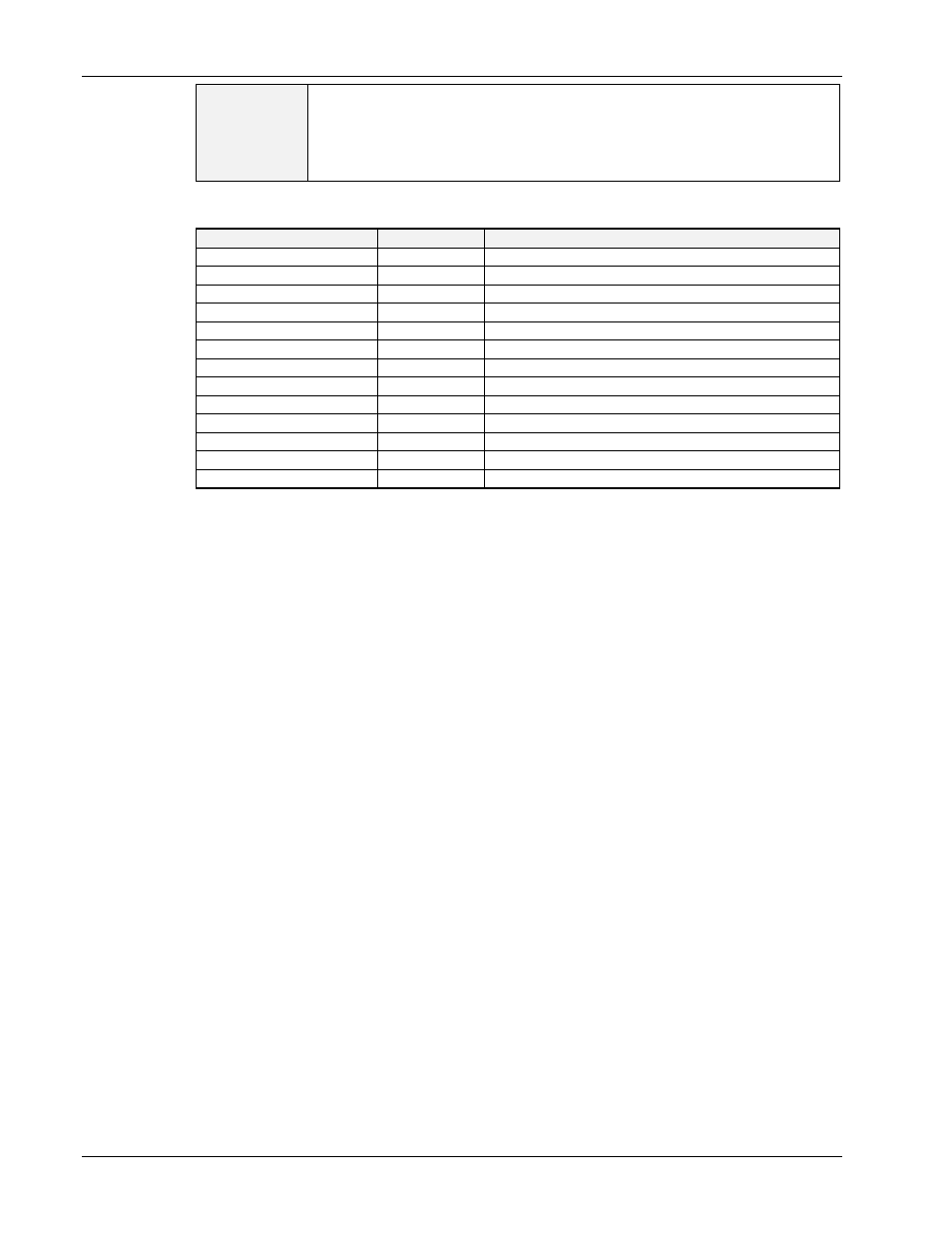Measurement Computing Personal488 rev.3.0 For DOS & Windows 3.Xi User Manual
Page 363

15B. Driver488/SUB, W31, W95, & WNT
III. COMMAND REFERENCES - 15. Command References
III-348
Personal488 User’s Manual, Rev. 3.0
EXAMPLE
result = Status(ieee,&StatusResult);
if (statusResult.transfer == TRUE) {
printf(“We have a transfer in progress\n”);
} else {
printf(“There is no transfer in progress\n”);
}
The
Status
command returns various items detailing the current state of Driver488. They are
returned in a data structure, based on the following table:
Status Item
Flag
Values and Description
Controller Active
.CA
TRUE
: Active Controller, FALSE: Not CA.
System Controller
.SC
TRUE
: System Controller, FALSE: Not SC.
Primary Bus Address
.Primaddr
0
to 30: Two-digit decimal number.
Secondary Bus Address
.Secaddr
0
to 31: Two-digit decimal number, or -1 if no address.
Address Change
.addrChange
TRUE
: Address change has occured, FALSE: Not so.
Talker
.talker
TRUE
: Talker, FALSE: Not Talker
Listener
.listener
TRUE
: Listener, FALSE: Not Listener
ByteIn
.bytein
TRUE
: Byte in, ready to read, FALSE: Not so.
ByteOut
.byteout
TRUE
: Byte out, ready to output, FALSE: Not so.
Service Request
.SRQ
TRUE
: SRQ is asserted, FALSE: SRQ is not asserted
Triggered
.triggered
TRUE
: Trigger command received, FALSE: Not so.
Cleared
.cleared
TRUE
: Clear command received, FALSE: Not so.
Transfer in Progress
.transfer
TRUE
: Transfer in progress, FALSE: Not so.
These
Status
items are more-fully described in the following paragraphs:
•
The Controller Active flag (
.CA
) is true if Driver488 is the Active Controller. If Driver488 is not
the System Controller, then it is initially a Peripheral and it becomes a controller when Driver488
receives control from the Active Controller.
•
The System Controller flag (
.SC
) is true if Driver488 is the System Controller. The System
Controller mode may be configured during installation or by using the SysController command.
•
The Primary Bus Address (
.Primaddr
) is the IEEE 488 bus device primary address assigned to
Driver488 or the specified device. This will be an integer from
0
to
30
. The Secondary Bus
Address (
.Secaddr
) is the IEEE 488 bus device secondary address assigned to the specified
device. This will be either
-1
to indicate no secondary address, or an integer from
0
to
31
. Note
that the interface device can never have a secondary address.
•
The Address Change indicator (
.addrChange
) is set whenever Driver488 become a Talker,
Listener, or the Active Controller, or when it becomes no longer a Talker, Listener, or the Active
Controller. It is reset when
Status
is read. The Talker (
.talker
) and Listener (
.listener
)
flags reflect the current Talker/Listener state of Driver488. As a Peripheral, Driver488 can check
this status to see if it has been addressed to Talk or addressed to Listen by the Active Controller.
In this way, the desired direction of data transfer can be determined.
•
The ByteIn (
.byteIn
) indicator is set when the I/O adapter has received a byte that can be read by
an
Enter
command. The ByteOut (
.byteOut
) indicator is set when the I/O adapter is ready to
output data. The Service Request field (
.SRQ
), as an active controller, reflects the IEEE 488 bus
SRQ
line signal. As a peripheral, this status reflects the
rsv
bit that can be set by the
Request
command and is cleared when the Driver488 is Serial Polled. For more details, refer to the
SPoll
command in this Sub-Chapter.
•
The Triggered (
.triggered
) and Cleared (
.cleared
) indicators are set when, as a Peripheral,
Driver488 is triggered or cleared. These two indicators are cleared when
Status
is read. The
Triggered and Cleared indicators are not updated while asynchronous transfers are in progress.
The Transfer in Progress indicator (
.transfer
) indicates that an asynchronous transfer is in
progress.
